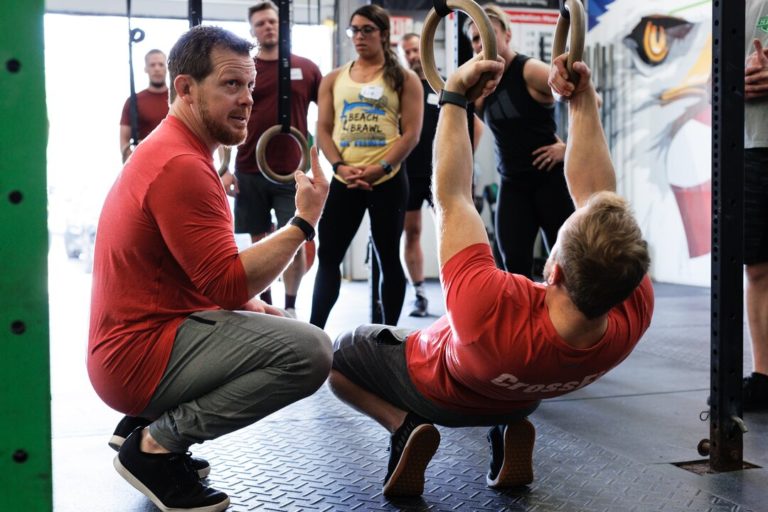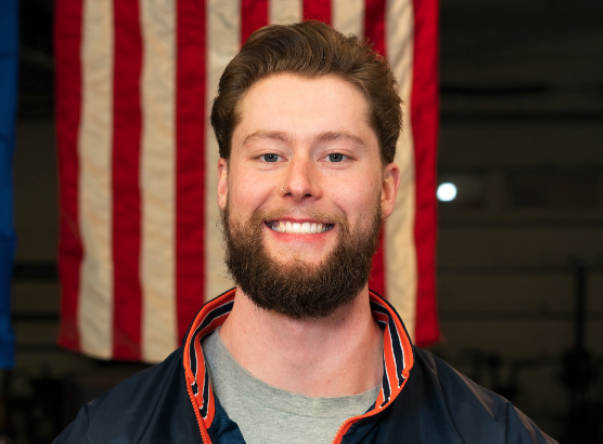Convincing athletes at a CrossFit gym to invest time and effort into skill progressions for high-difficulty movements can sometimes be a thankless task. Questions like, “Why are we doing this?”, “Am I ever going to get this movement?“, and “When am I going to need this in real life?” tend to arise.
 While some movements — like the single-leg squat (aka pistol squat), handstand walk, or ring muscle-up — might never be used outside the gym, their value extends far beyond their immediate application. It’s essential to justify why your paying members spend class time on these movements.
While some movements — like the single-leg squat (aka pistol squat), handstand walk, or ring muscle-up — might never be used outside the gym, their value extends far beyond their immediate application. It’s essential to justify why your paying members spend class time on these movements.
Mastering these high-skill movements is not essential for everyday life. Indeed, achieving a flawless single-leg squat or an effortless handstand walk might remain elusive even for those who have trained diligently for years. However, focusing on these movements, even if the final goal seems out of reach, can significantly enhance the overall development of the 10 general physical skills regardless of age, experience, or ability. This long-term enhancement is a testament to the value of skill progressions, motivating athletes to stay committed to their training.
To understand why athletes should embrace these skill progressions, we can simply remind them the sum of its parts is often greater than the whole. High-skill movements like the single-leg squat or ring muscle-up require a blend of the general physical skills outlined in the Level 1 Training Guide, such as strength, balance, coordination, flexibility, and speed. Athletes indirectly improve multiple aspects of their fitness by working on progressions, drills, and modifications for these complex movements relative to their capacity.
Take the single-leg squat, for instance. This movement demands exceptional strength, balance, coordination, and flexibility. Practicing a variation of the single-leg squat relative to an athlete’s capacity puts every athlete in a position to work on that skill, even if the prescribed single-leg squat isn’t their current goal. As athletes practice these drills, they build a foundation of balance, single-leg strength, and lower-body flexibility, critical skills to maintain as athletes age. By dedicating a portion of class time to these drills, coaches can help athletes enhance their physical skills without the immediate need to execute a perfect single-leg squat.
 Similarly, consider the ring muscle-up — a movement that integrates strength, power, flexibility, coordination, and speed. Without proper context, the progression work for this exercise might be met with skepticism or indifference. Yet the value of working on its components cannot be overstated. For instance, the false-grip ring row is a foundational drill that challenges the athlete’s wrist flexibility and enhances forearm and back strength. While perhaps not as glamorous as the muscle-up, this exercise contributes significantly to overall upper-body strength and flexibility. Practicing low transitions on the rings helps athletes build coordination, strength, and speed. Even with support, transitioning from below to above the rings is checking off multiple boxes when building skills necessary for physical fitness. Athletes often underestimate the challenge of this drill but find themselves empowered and more adept in their overall ring work once they complete it, boosting their sense of accomplishment and confidence.
Similarly, consider the ring muscle-up — a movement that integrates strength, power, flexibility, coordination, and speed. Without proper context, the progression work for this exercise might be met with skepticism or indifference. Yet the value of working on its components cannot be overstated. For instance, the false-grip ring row is a foundational drill that challenges the athlete’s wrist flexibility and enhances forearm and back strength. While perhaps not as glamorous as the muscle-up, this exercise contributes significantly to overall upper-body strength and flexibility. Practicing low transitions on the rings helps athletes build coordination, strength, and speed. Even with support, transitioning from below to above the rings is checking off multiple boxes when building skills necessary for physical fitness. Athletes often underestimate the challenge of this drill but find themselves empowered and more adept in their overall ring work once they complete it, boosting their sense of accomplishment and confidence.
In an 8-minute progression session, athletes of all levels — beginners, intermediates, and advanced — can simultaneously work on several of the 10 general physical skills prioritized by the CrossFit methodology. This means even if they don’t achieve a full single-leg squat or muscle-up, they still make meaningful strides in their overall fitness. This reassurance of overall fitness improvement is a powerful motivator for athletes to continue their skill progressions.
Ultimately, while the high-skill movements seem irrelevant to daily life, the progressions and drills associated with them offer substantial benefits. They challenge and develop physical skills so profoundly that they are unmatched by any other training program. By helping athletes appreciate the broader value of these movements, coaches can foster a greater sense of purpose and motivation, encouraging continued dedication to those extremely difficult movements in class. Through this approach, athletes work toward mastering complex movements and enhancing their skills, making every progression a valuable component of their fitness journey.
aBOUT THE AUTHOR
 Jake Thorp is a co-owner and head coach at CrossFit Beyond in Albany, New York. He has been coaching CrossFit for seven years and is a Certified CrossFit Trainer (CF-L3). Jake has a B.S. in biochemistry and manages a biotech manufacturing team full-time, where he can apply and refine coaching and development strategies taught in CrossFit courses to improve individuals’ performance on the production floor and in the gym.
Jake Thorp is a co-owner and head coach at CrossFit Beyond in Albany, New York. He has been coaching CrossFit for seven years and is a Certified CrossFit Trainer (CF-L3). Jake has a B.S. in biochemistry and manages a biotech manufacturing team full-time, where he can apply and refine coaching and development strategies taught in CrossFit courses to improve individuals’ performance on the production floor and in the gym.
How Will a Single-Leg Squat or Handstand Walk Help Me in Life?